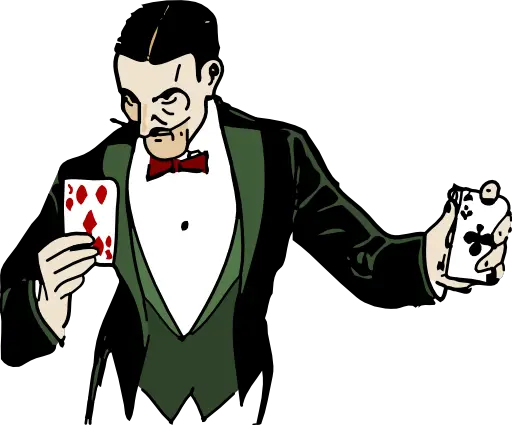Support our educational content for free when you purchase through links on our site. Learn more
How Do Magicians Do the Mind Reading Trick? 🔮 7 Secrets Revealed (2025)
Imagine sitting in a theater, heart pounding, as a magician seemingly plucks your deepest thoughts out of thin air. You think of a random word, a number, or a secret memory—and just like that, they reveal it flawlessly. How on earth do they do it? Is it psychic powers, supernatural gifts, or something else entirely? Spoiler alert: it’s none of those! At Mind Trick™, we’re pulling back the velvet curtain to expose the 7 core secrets behind the mind reading illusion that have baffled audiences for centuries.
From psychological wizardry and body language mastery to clever gadgets and pre-show preparation, this article dives deep into the fascinating techniques mentalists use to create the illusion of reading minds. Whether you’re a curious spectator or an aspiring mentalist, you’ll discover how science, art, and showmanship blend to make the impossible seem real. Ready to have your mind blown? Let’s get started!
Key Takeaways
- Magicians don’t actually read minds; they use a combination of psychology, observation, and misdirection to create the illusion.
- The art of cold reading and suggestion allows performers to make astonishingly accurate guesses.
- Body language and micro-expressions are powerful tools for “decoding” thoughts.
- Props, technology, and pre-show work often play a hidden role in mind reading acts.
- Leading mentalists like Derren Brown and Colin Cloud have popularized these techniques worldwide.
- Anyone can learn mentalism with practice, study, and ethical performance.
Ready to start your own journey into mentalism? Check out beginner kits and tools from trusted brands like Ellusionist and Theory11 to get hands-on experience with mind reading magic!
👉 Shop Mentalism Kits on:
Table of Contents
- ⚡️ Quick Tips and Facts
- The Enigma of Mind Reading Magic: A Journey Behind the Curtain
- The Truth Behind the Trick: Do Magicians Really Read Minds? 🤔
- Unmasking the Mentalist: More Than Just a Magician? 🎩
- A Glimpse into the Past: The Fascinating History of Mentalism & Psychic Entertainment 📜
- The Master Keys: 🔑 7 Core Secrets Behind “Mind Reading” Illusions
- Psychological Prowess: The Art of Suggestion & Cold Reading 🧠
- Observational Acuity: Reading Body Language & Micro-Expressions 👀
- Pre-Show Secrets & Hidden Helpers: The Power of Preparation 🤫
- Clever Gimmicks & Technological Wonders: Tools of the Trade 🛠️
- Memory Mastery & Rapid Calculation: The Brain as a Supercomputer 💡
- Verbal Wizardry & Linguistic Loopholes: Controlling the Narrative 🗣️
- Misdirection & Audience Management: Directing Your Focus 🎯
- Beyond the Basics: Advanced Mentalism Techniques & Principles ✨
- Masters of the Mind: Who Are Today’s Top Mentalists & Illusionists? 🌟
- Can YOU Learn to “Read Minds”? Getting Started in Mentalism 📚
- The Ethics of Illusion: Responsible Mentalism & Entertainment ⚖️
- Conclusion: The Magic of the Human Mind, Revealed! 🎉
- Recommended Links 🔗
- FAQ 🤔
- Reference Links 📚
⚡️ Quick Tips and Facts
Welcome to the magical world of mind reading tricks! At Mind Trick™, where we specialize in Mind-Bending Tricks and Illusions, we love peeling back the layers of mystery to reveal the fascinating craft behind the curtain. Here are some quick nuggets to get you started:
- Magicians don’t actually read minds—they use a clever mix of psychology, misdirection, and sleight of hand to create the illusion of mind reading.
- The term “mentalism” refers to the art of simulating psychic abilities, often involving mind reading, prediction, and telepathy illusions.
- Techniques like cold reading, peeking, and forcing are the magician’s secret weapons.
- Body language and micro-expressions are gold mines for mentalists to “decode” thoughts.
- The best mentalists combine psychology, performance skills, and showmanship to blow your mind!
- Famous mentalists like Derren Brown and Colin Cloud have popularized mind reading as a theatrical art form.
- Mind reading tricks are often enhanced by props, stooges, or pre-show work.
- Ethics matter: mentalists entertain, not exploit. Always respect your audience’s trust.
Curious to learn how these secrets come together? Let’s dive deeper! For a related deep dive, check out our mind reading magic trick article.
The Enigma of Mind Reading Magic: A Journey Behind the Curtain
Ever wondered how magicians seem to pluck thoughts straight from your brain? It’s like they have a secret hotline to your mind! But spoiler alert: there’s no actual telepathy involved. Instead, mind reading magic is a dazzling blend of psychology, observation, and trickery.
At Mind Trick™, we think of it as a carefully choreographed dance between the magician and the audience’s subconscious signals. The magician reads subtle cues—like a raised eyebrow or hesitation—and uses that to guess what’s on your mind. It’s like being a detective of the invisible.
This section will unravel the mystery, showing you how magicians create the illusion of mind reading, making you question what’s real and what’s magic.
The Truth Behind the Trick: Do Magicians Really Read Minds? 🤔
Let’s get straight to the point: magicians do NOT possess psychic powers. Despite what you might see on TV or stage, genuine mind reading has never been scientifically proven. The late skeptic James Randi famously offered a $1 million prize to anyone who could demonstrate real psychic abilities—and no one ever claimed it. Source: James Randi Educational Foundation.
So, how do magicians pull off these mind-blowing feats? The answer lies in psychological techniques, clever misdirection, and preparation. They exploit human nature’s predictable patterns, use linguistic tricks, and sometimes gather information beforehand (a technique called hot reading).
For example, a magician might:
- Use cold reading to make high-probability guesses based on your appearance and reactions.
- Employ peeking methods to secretly glimpse written information.
- Use forcing to subtly influence your choices without you realizing it.
The result? You feel like your mind has been opened, but really, you’re witnessing a masterclass in human psychology and showmanship.
Unmasking the Mentalist: More Than Just a Magician? 🎩
You might have heard the term “mentalist” tossed around. So, what’s the difference between a mentalist and a magician? While all mentalists are magicians, not all magicians are mentalists.
Mentalists specialize in mind-reading illusions, predictions, and psychological manipulation. They often perform without flashy props, relying instead on verbal skills, observation, and audience interaction. Think of them as the Sherlock Holmes of magic, deducing your thoughts with razor-sharp insight.
Some famous mentalists include:
- Derren Brown – Known for his psychological illusions and TV specials.
- Max Maven – A pioneer in modern mentalism.
- Colin Cloud – “The Real Life Sherlock Holmes,” famous for his street and stage mentalism.
Mentalism is a fascinating fusion of magic, psychology, and theater, making it one of the most intriguing branches of magic.
A Glimpse into the Past: The Fascinating History of Mentalism and Psychic Entertainment 📜
Mentalism has roots stretching back centuries, evolving alongside magic itself. Here’s a quick timeline to whet your appetite:
| Era | Key Developments |
|---|---|
| 19th Century | Spiritualism and séances popularized psychic phenomena; magicians began incorporating “mind reading” into acts. |
| Early 1900s | Performers like The Great Kreskin and Joseph Dunninger popularized mentalism on stage and radio. |
| Mid-20th Century | Mentalism became more theatrical; Dai Vernon and Max Maven refined psychological techniques. |
| Modern Era | Mentalists like Derren Brown brought mentalism to TV and global audiences, blending psychology and entertainment. |
Understanding this history helps us appreciate how mentalism blends science, art, and showmanship to captivate audiences worldwide.
The Master Keys: 🔑 7 Core Secrets Behind “Mind Reading” Illusions
Ready to peek behind the curtain? Here are the 7 core techniques magicians use to create the illusion of mind reading:
1. Psychological Prowess: The Art of Suggestion and Cold Reading 🧠
Cold reading is a magician’s bread and butter. It involves making broad statements or educated guesses that seem personal but apply to many people. Combined with suggestion, magicians guide your thoughts without you realizing it.
How it works:
- Use vague but relatable statements (“You have a connection to the letter M.”) that feel specific.
- Observe reactions to refine guesses.
- Employ Barnum statements that everyone identifies with.
It’s like being a mind detective, piecing together clues from your responses.
2. Observational Acuity: Reading Body Language and Micro-Expressions 👀
Our bodies often betray our thoughts. Mentalists are experts at reading micro-expressions—fleeting facial movements—and body language to glean information.
Examples include:
- Pupils dilating when excited.
- Subtle nods or shifts indicating agreement or hesitation.
- Breathing patterns revealing nervousness.
This skill takes years to master but is incredibly powerful for “reading minds.”
3. Pre-Show Secrets and Hidden Helpers: The Power of Preparation 🤫
Many mind reading acts involve pre-show work—gathering information about the audience before the performance. This can include:
- Casual conversations to harvest details.
- Using social media to research participants.
- Employing confederates or stooges planted in the audience.
Preparation is key to making the impossible seem effortless.
4. Clever Gimmicks and Technological Wonders: Tools of the Trade 🛠️
Props and gadgets often play a role in mind reading illusions. Some common tools include:
| Tool | Purpose | Example |
|---|---|---|
| Peek Devices | Secretly view written info | Peek wallets, thumb tips |
| Electronic Aids | Transmit info covertly | Bluetooth earpieces |
| Magic Apps | Predict choices digitally | Apps like “Mind Reader” on iOS/Android |
These tools enhance the magician’s ability to “know” your thoughts without detection.
5. Memory Mastery and Rapid Calculation: The Brain as a Supercomputer 💡
Mentalists often train their memory to recall complex information instantly. They also perform lightning-fast calculations or pattern recognition to predict outcomes.
Techniques include:
- Mnemonics to memorize long lists.
- Number games to guess chosen numbers.
- Pattern spotting in audience behavior.
This mental agility adds to the illusion of psychic ability.
6. Verbal Wizardry and Linguistic Loopholes: Controlling the Narrative 🗣️
Words are powerful! Mentalists use leading questions, double meanings, and linguistic tricks to steer your thoughts.
For example:
- Asking, “Think of a number between 1 and 10,” but subtly influencing your choice.
- Using ambiguous language that can be interpreted multiple ways.
This verbal finesse keeps you guessing.
7. Misdirection and Audience Management: Directing Your Focus 🎯
The oldest trick in the magician’s book! By diverting your attention, magicians perform secret moves unnoticed.
Examples:
- Gesturing dramatically with one hand while peeking with the other.
- Using humor or storytelling to distract.
- Controlling the pacing to keep you off balance.
Misdirection is the glue that holds the illusion together.
Beyond the Basics: Advanced Mentalism Techniques and Principles ✨
Once you’ve mastered the basics, mentalism opens up a world of advanced techniques:
- Hot reading: Using secretly obtained info to amaze.
- Muscle reading: Feeling subtle muscle responses to yes/no questions.
- Psychological forcing: Deeply influencing choices using subconscious cues.
- Equivoque: The “magician’s choice” technique to control outcomes.
These methods require practice and ethical use but can elevate your act to professional levels.
Masters of the Mind: Who Are Today’s Top Mentalists and Illusionists? 🌟
If you want to see mind reading magic at its finest, check out these world-renowned performers:
| Name | Specialty | Notable Works |
|---|---|---|
| Derren Brown | Psychological illusionist | TV specials like Mind Control |
| Colin Cloud | Street and stage mentalism | Britain’s Got Talent finalist |
| Banachek | Scientific mentalism | Known for fooling scientists |
| Max Maven | Classic mentalism | Influential author and performer |
| Oz Pearlman | Sleight of hand & mentalism | America’s Got Talent finalist |
Watching their performances reveals the artistry behind the science of mind reading.
Can YOU Learn to “Read Minds”? Getting Started in Mentalism 📚
Good news: yes, you can learn to perform mind reading tricks! It takes practice, patience, and a curious mind.
Here’s how to start:
- Study psychology and body language basics.
- Practice cold reading on friends and family.
- Learn magic fundamentals like sleight of hand and misdirection.
- Explore beginner mentalism kits like those from Ellusionist or Theory11.
- Watch tutorials and read books by experts like Derren Brown and Max Maven.
Remember, the magic is in the performance as much as the trick itself.
The Ethics of Illusion: Responsible Mentalism and Entertainment ⚖️
With great power comes great responsibility! Mentalists must respect their audience’s trust and avoid exploiting vulnerabilities.
Key ethical points:
- Always clarify that your act is entertainment, not genuine psychic ability.
- Avoid sensitive topics or personal trauma.
- Do not claim supernatural powers.
- Use your skills to inspire wonder, not fear.
At Mind Trick™, we believe ethical performance enhances the magic’s impact and builds lasting respect.
Conclusion: The Magic of the Human Mind, Revealed!
So, how do magicians do the mind reading trick? As we’ve uncovered together, it’s a dazzling cocktail of psychology, observation, clever misdirection, and preparation—not supernatural powers. The real magic lies in the performer’s ability to read subtle cues, guide your thoughts, and create an experience that feels like telepathy.
At Mind Trick™, we love how mentalism blurs the line between science and art, turning human behavior into a playground for wonder. Whether it’s the psychological finesse of cold reading, the sleight of hand, or the technological gadgets that aid the illusion, each element plays a vital role in crafting that jaw-dropping moment.
If you’re inspired to try your hand at mind reading, remember: it’s not about fooling people but about entertaining and connecting with your audience. With practice and ethical intent, anyone can learn to perform these astonishing feats.
Ready to dive deeper? Check out our recommended resources below and start your journey into the fascinating world of mentalism!
Recommended Links
Looking to explore or purchase tools and learn more about mind reading magic? Here are some top picks from trusted brands and authors:
-
Ellusionist Mentalism Starter Kits:
Amazon | Ellusionist Official Website -
Theory11 Mentalism Decks and Props:
Amazon | Theory11 Official Website -
Books on Mentalism and Mind Reading:
-
Magic Apps for Mind Reading Effects:
Search for “Mind Reader” apps on iOS App Store or Google Play Store
FAQ
What are some common techniques used by magicians to perform mind-reading tricks?
Magicians commonly use cold reading, peeking, forcing, and misdirection. Cold reading involves making high-probability guesses and interpreting body language. Peeking allows secret glimpses of written information. Forcing subtly influences a spectator’s choice. Misdirection diverts attention to perform secret moves unnoticed. These techniques combined create the illusion of mind reading.
How do mentalists use suggestion and persuasion to create the illusion of mind-reading?
Mentalists skillfully use linguistic cues, leading questions, and psychological suggestion to guide thoughts. For example, they might ask, “Think of a number between 1 and 10,” but their phrasing nudges you toward a specific number. They also use priming, planting ideas subtly before the trick begins, and anchoring emotions to certain words or gestures, making the spectator’s choices feel spontaneous but actually controlled.
What is the difference between a mind-reading trick and a cold reading technique?
A mind-reading trick often involves props, sleight of hand, or pre-show preparation to reveal specific information, creating a dramatic effect. Cold reading is a psychological technique where the performer makes broad, general statements and refines guesses based on the subject’s reactions, without prior knowledge. Cold reading is more conversational and less reliant on physical props.
Can anyone learn how to perform mind-reading tricks, or is it a special talent?
Absolutely! While some performers have natural charisma or observational skills, mind reading is a learnable art. It requires study, practice, and patience to master techniques like cold reading, misdirection, and memory training. Many professional mentalists started as hobbyists. Resources like books by Derren Brown or Theodore Annemann and beginner kits from Ellusionist can help you start your journey.
What are some famous mind-reading tricks that have been performed by well-known magicians?
Some iconic mind-reading effects include:
- Book Tests: The magician “reads” a word or passage chosen secretly from a book.
- Any Card at Any Number: Predicting a card chosen by a spectator at a specific position.
- Drawing Duplication: The mentalist replicates a spectator’s hidden drawing.
- Name or Number Reveal: The magician reveals a thought-of name or number seemingly telepathically.
Performers like Derren Brown, Banachek, and Colin Cloud have popularized these effects with their unique twists.
How do magicians use misdirection and distraction to enhance the mind-reading illusion?
Misdirection is the art of focusing the audience’s attention away from secret moves or information gathering. Magicians use gestures, humor, storytelling, and timing to distract. For example, while you’re laughing at a joke, the magician might peek at a written note. This subtle control of attention is crucial to maintaining the illusion.
What are some tips for uncovering the secrets behind a magician’s mind-reading trick?
- Observe carefully: Watch body language and timing.
- Look for props: Hidden devices or marked cards can be clues.
- Notice patterns: Repeated phrases or gestures might be cues.
- Research: Books and videos on mentalism reveal common techniques.
- Practice skepticism: Remember, it’s about entertainment, not supernatural powers.
Reference Links
- James Randi Educational Foundation — https://web.randi.org/
- Derren Brown Official Website — https://derrenbrown.co.uk/
- Ellusionist Official Website — https://www.ellusionist.com/
- Theory11 Official Website — https://www.theory11.com/
- Alan Hudson on The Mind Reading Magician — https://www.alanhudson.net/magic/the-mind-reading-magician/
- Magicians’ Corner: How Do Magicians Read Minds? — https://www.magicianscorner.co.uk/how-do-magicians-read-minds/
- Roger Lapin Magician Blog — https://www.rogerlapin.co.uk/magician-blog/how-do-magicians-read-minds/
Ready to unlock the secrets and amaze your friends? Dive into the world of mentalism and let your mind do the magic! 🎩✨



Well, I’ve certainly learnt something here. Thanks 🙂